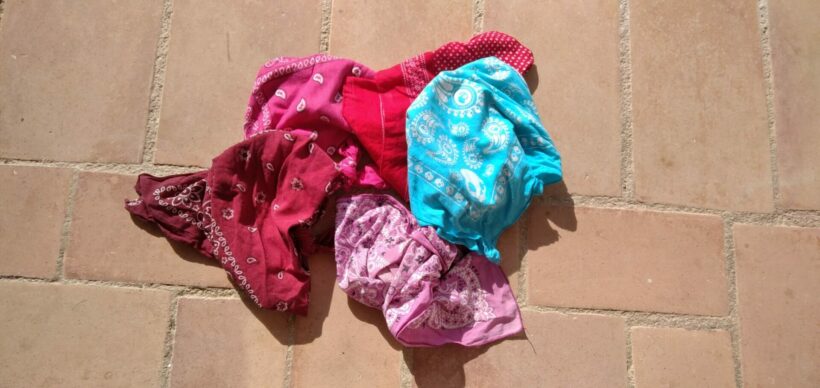For more than a decade, the British NGO Earth Sight has been tracking the fate of 816,000 tons of cotton linked to human rights abuses and deforestation in the Brazilian Cerrado. The cotton was made into clothing and then sold in Inditex and H&M stores in Spain, most of which carry the Better Cotton sustainability label. Inditex is one of the largest textile companies in the world. Its headquarters are in Arteixo, a suburb of A Coruña in Galicia. Its subsidiaries include Pull&Bear, Bershka, and Zara. The Swedish company H&M operates worldwide through shops and online sales.
Dirty cotton
For more than a year, satellite images, court rulings, shipping documents, and even undercover interviews at trade fairs have been analyzed. The Cerrado is Brazil’s second-largest biotope after the Amazon. Its enormous biodiversity is increasingly threatened by the expansion of monocultures. The dirty cotton business goes hand in hand with large-scale illegal deforestation, corruption, human rights violations, and violence. In its report Fashion Crimes, the NGO investigates the link between fast fashion and the boom in Brazilian cotton production, documenting the journey of 816,000 tons of cotton from Brazilian plantations through eight Chinese textile suppliers to the world’s two largest clothing manufacturers. According to the report, at least 20 million garments and household items were supplied to H&M and Inditex and ended up on the Spanish textile market. “All dirty cotton tracked by Earthsight carries the Better Cotton sustainability label,” Brazilian producers told the NGO.
Plantations instead of forests
At 1,910,037 km2, the Cerrado is larger than Alaska. The savannah covers 22% of Brazil’s territory.
The state of Bahia is home to more than half of the world’s species. Since 1985, 22,000 square kilometers of the biome have been deforested to make way for plantations, an area roughly the size of Wales. The carbon footprint of this ecocide: the deforestation of such a huge area is equivalent to the carbon emissions of 50 million cars in a year. Cotton fields are ‘stocked’ with 600 million liters of pesticides a year. As a result, more than half of this rich ecosystem has been lost.
And deforestation is increasing. In El Cerrado, according to the Fashion Crime report, deforestation increased by 43% last year, and almost all of it is illegal. Behind this situation is the dramatic increase in cotton production in Brazil in recent decades. In addition to cotton production, soya cultivation is the main cause of deforestation in the region. It is not uncommon for the two to alternate on plantations. By 2030, Brazil is expected to overtake the United States as the world’s largest exporter of cotton.
Destroying and appropriating
“We all know what soy and beef have done to Brazil’s forests. The impact of cotton has gone largely unnoticed.
But the boom of recent decades has turned into an environmental disaster,” says Sam Lawson, director of Earthsight. SLC Agricola and the Horita Group, two of Brazil’s largest agribusiness companies, are believed to be behind the aggressive deforestation of the Cerrado. Their huge industrial holdings have been linked to a series of court injunctions, corruption convictions and millions of dollars in fines.
“We are talking about the deforestation of around 100,000 hectares of forest in El Cerrado,” denounce activists from Ecologistas en Acción. The motto of the large export companies investigated by Earthsight is ‘destroy and appropriate’,” says the British NGO, “with the expansion of cotton cultivation in the area, traditional communities have disappeared. Earthside speaks of a “destructive mix of corruption, greed, violence, and impunity that has led to the theft of public land and the dispossession of local communities”.
Better Cotton: an example
The Better Cotton certification system certifies that the raw material used to make clothes is sustainable, and in their annual reports, H&M and Zara refer to the use of sustainably produced cotton, which they claim accounts for more than 50% of their production. But: “What Better Cotton certified as sustainable was all verifiably soiled cotton tracked by Earthsight,” Brazilian producers told the NGO.
“So, if you have cotton clothes, towels or sheets from H&M or Zara in your wardrobe, they are likely to be worn products contaminated by the destruction of the Brazilian Cerrado,” warns Lawson, director of Earthsight. “These companies talk about good practice, social responsibility, and certification, they say they invest in traceability and sustainability, but this is as fake as the floral designs in their shop windows.
Inditex has been accused of greenwashing, lack of transparency, and human rights abuses for years. The textile giant is now demanding disclosure and traceability from its largest certification provider, Better Cotton. In light of Earthsight’s revelations, Better Cotton announced a three-month review period in September 2023.
On 1 March, the company updated its bylaws and audit criteria. However, according to Earthsight, Better Cotton and similar certification providers are “welcome scapegoats to deflect criticism of manufacturing companies working with cheaply sourced raw materials”. Furthermore, under Better Cotton’s new certification principles, cotton can be certified as sustainable even if illegal deforestation of land used for agriculture took place before 2020, even if the land was stolen from local communities.
But the biggest culprits are foreign consumer markets. The EU is the world’s biggest clothing importer, followed by the US, and Earthsight highlights the responsibility of the EU, which adds to the pressure with its demand for textiles and food. “Almost all of the burden is due to foreign demand,” says Earthsight.






